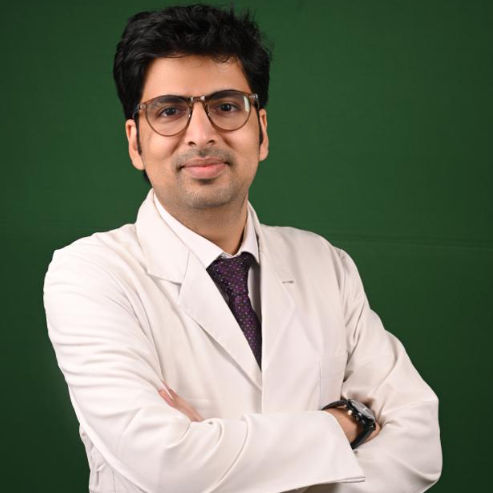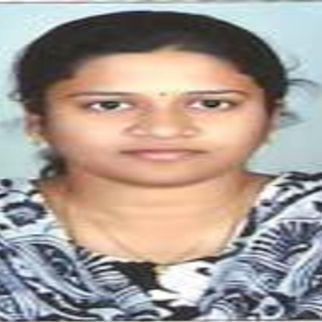How To Reduce Split Ends?
Learn how to reduce and prevent split ends with simple hair care tips, proper grooming techniques, and nourishing habits for healthier hair.

Written by Dr. Sonia Bhatt
Last updated on 3rd Jul, 2025

Introduction
Split ends are a common hair problem that can make your hair look dull, frizzy, and unhealthy. If you’ve noticed your hair splitting at the ends, don’t worry—you’re not alone! The good news is that with the right care, you can prevent and reduce split ends, keeping your hair smooth and strong.
This article will cover what causes split ends, how to recognise them, and practical tips to manage them effectively.
What Are Split Ends?
Split ends occur when the protective outer layer of your hair, called the cuticle, wears away, causing the hair strand to split into two or more parts. This usually happens at the tips of your hair, where the strands are oldest and most fragile.
1. Common Signs of Split Ends
Look out for these signs that suggest you may have split ends:
Dry, brittle hair
Hair that tangles easily
Frayed or "feathered" ends
Rough texture when you run your fingers through your hair
2. What Causes Split Ends?
Several factors contribute to split ends, including:
1. Heat Styling: Excessive use of hair dryers, straighteners, and curling irons can damage hair.
2. Chemical Treatments: Hair colouring, perming, and relaxing weaken hair over time.
3. Brushing Too Hard: Rough brushing, especially when hair is wet, can cause breakage.
4. Lack of Moisture: Dry hair is more prone to splitting.
5. Environmental Factors: Sun exposure, pollution, and hard water can damage hair.
6. Poor Diet: Lack of essential nutrients like protein, vitamins, and minerals affects hair health.
Consult Top Specialists for Your Symptoms
How to Reduce and Prevent Split Ends?
While you can’t fully repair split ends once they form, you can prevent them from getting worse and reduce future damage. Here are some simple yet effective tips:
1. Trim Your Hair Regularly
The only way to completely remove split ends is by trimming them. Get a haircut every 6-8 weeks to keep your ends healthy. If you’re hesitant about cutting too much, ask your stylist for a "dusting" trim—a light trim that removes only the damaged tips.
2. Avoid Excessive Heat Styling
Protect your hair from heat damage with these simple steps:
Use heat tools on the lowest setting possible.
Always apply a heat protectant spray before styling.
Try air-drying your hair instead of blow-drying whenever possible.
3. Be Gentle When Brushing
Brushing your hair carefully can help prevent breakage:
Use a wide-tooth comb or a soft-bristle brush to detangle hair.
Start brushing from the ends and work your way up to avoid pulling.
Avoid brushing wet hair—it’s more fragile when damp.
4. Keep Your Hair Hydrated
Maintaining moisture is key to preventing split ends:
Use a deep conditioning mask once a week.
Apply natural oils (like coconut, argan, or almond oil) to your ends to lock in moisture.
Avoid shampoos with harsh sulphates—opt for gentle, moisturising formulas.
5. Protect Your Hair from Damage
Small protective measures can make a big difference:
Wear a satin or silk scarf or use a satin pillowcase to reduce friction while sleeping.
Tie your hair in a loose braid or bun instead of tight ponytails to prevent breakage.
Cover your hair with a hat or scarf when exposed to sun or wind.
6. Eat a Hair-Friendly Diet
Healthy hair starts from within. Include these nutrients in your diet:
Protein – Foods like eggs, fish, and beans strengthen hair.
Omega-3 fatty acids – Walnuts, flaxseeds, and salmon among other foods are known to keep hair shiny.
Vitamins A, C, E, and Biotin – Produce like carrots, citrus fruits, and nuts promote hair growth.
7. Avoid Over-Washing
Washing hair too often strips away natural oils. Try washing 2-3 times a week and use a sulphate-free shampoo.
When to See a Specialist?
If your split ends are severe or your hair keeps breaking despite good care, it might be time to consult a dermatologist or trichologist (hair specialist) on Apollo 24|7. They can check for underlying issues like nutrient deficiencies or scalp conditions.
Final Thoughts
Split ends can make even the healthiest hair appear damaged, but with the right care and habits, you can keep them under control. Regular trims, gentle styling practices, proper hydration, and a nutrient-rich diet all contribute to smoother, stronger hair.
By taking a proactive approach, you can enjoy healthier-looking hair and minimise the chances of split ends affecting your style and confidence.
Consult Top Dermatologists
Consult Top Dermatologists
Dr. Paulomi Vartak
Dermatologist
2 Years • MBBS, MD (DERMATOLOGY,VENEREOLOGY AND LEPROSY)
Pune
Pramodini Urology Foundation and stree clinic, Pune
Dr. Mayuri Jain
Dermatologist
11 Years • MBBS, MD Dermatology , Venereology & Leprosy
Delhi
Dr Mayuri Jain Clinic, Delhi
Dr. Kavitha Killaparthy
Dermatologist
23 Years • MBBS,DIPLOMA(DERMATOLOGY,VENEREOLOGY,LEPROSY)
Hyderabad
JDS Skin & Hair Clinic, Hyderabad

Dr Ekansh Shekhar
Dermatologist
10 Years • MBBS MD
Lucknow
Apollo Clinic Hazratganj, Lucknow

Dr. Swathi Thadishetti
Dermatologist
14 Years • MBBS, MD (DVL)
Karim Nagar
RKD Hospital, Karim Nagar
Consult Top Specialists for Your Symptoms
Dr. Paulomi Vartak
Dermatologist
2 Years • MBBS, MD (DERMATOLOGY,VENEREOLOGY AND LEPROSY)
Pune
Pramodini Urology Foundation and stree clinic, Pune
Dr. Mayuri Jain
Dermatologist
11 Years • MBBS, MD Dermatology , Venereology & Leprosy
Delhi
Dr Mayuri Jain Clinic, Delhi
Dr. Kavitha Killaparthy
Dermatologist
23 Years • MBBS,DIPLOMA(DERMATOLOGY,VENEREOLOGY,LEPROSY)
Hyderabad
JDS Skin & Hair Clinic, Hyderabad

Dr Ekansh Shekhar
Dermatologist
10 Years • MBBS MD
Lucknow
Apollo Clinic Hazratganj, Lucknow

Dr. Swathi Thadishetti
Dermatologist
14 Years • MBBS, MD (DVL)
Karim Nagar
RKD Hospital, Karim Nagar